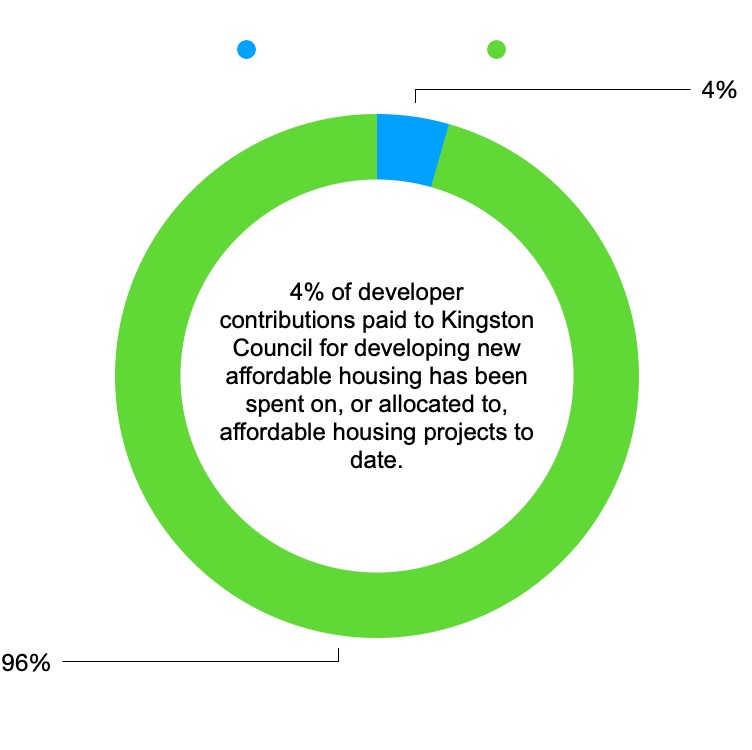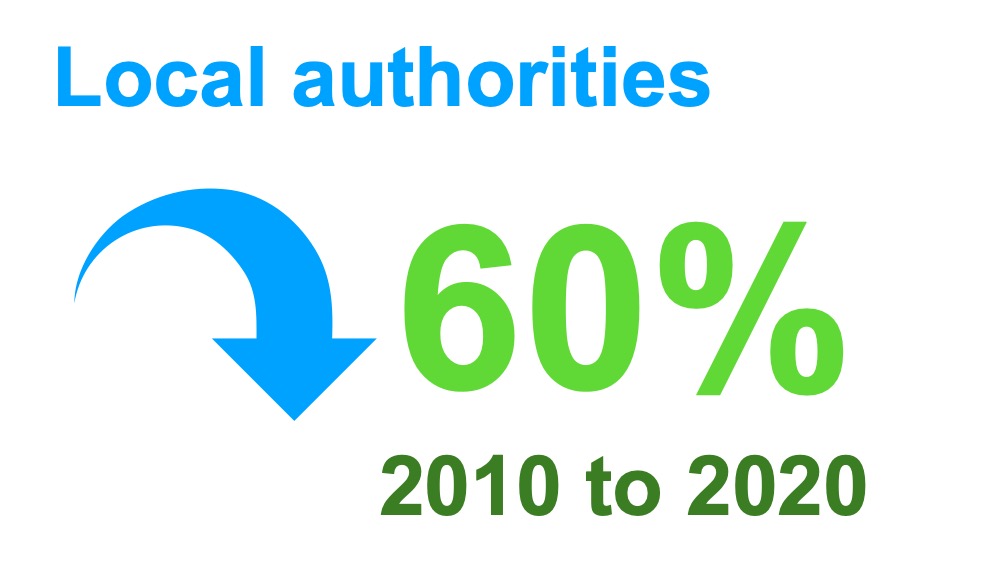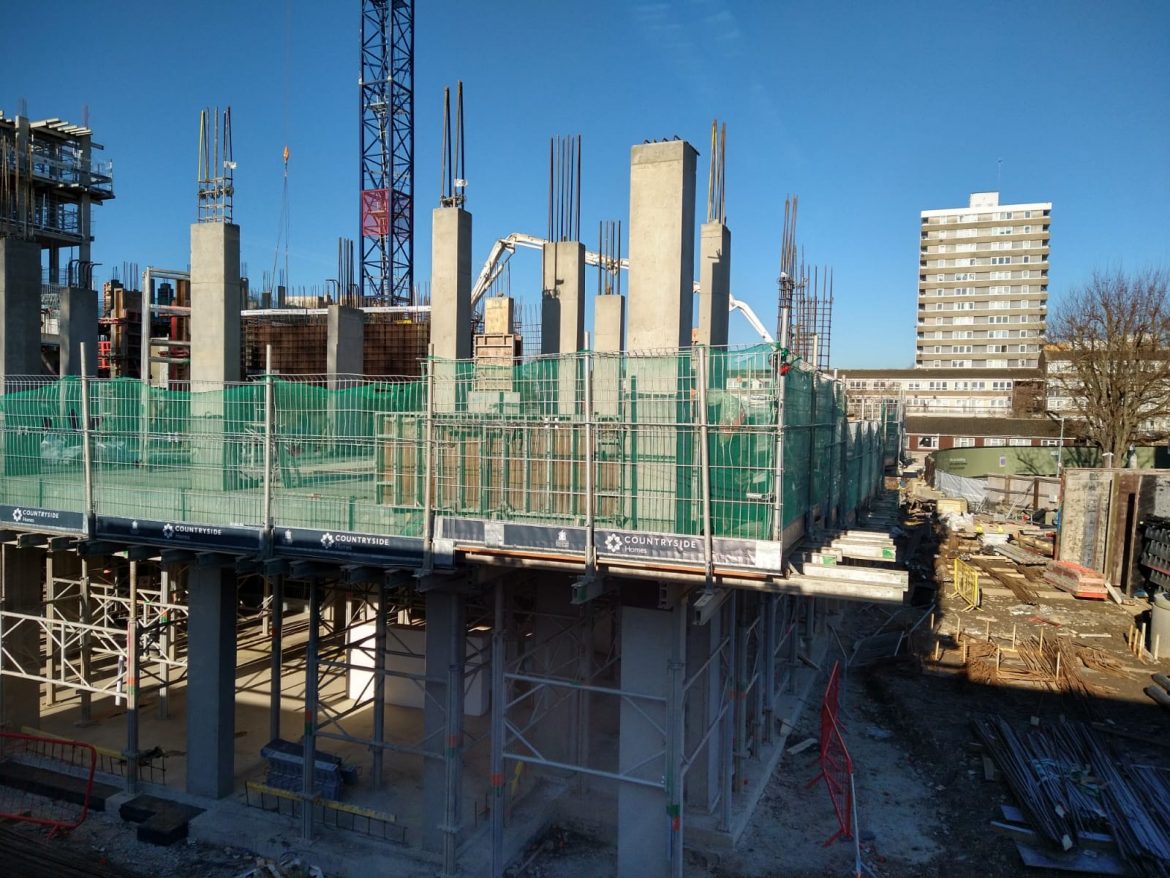Developers have paid £3.6m to Kingston Council for delivering new affordable housing that is yet to be spent or allocated to affordable housing projects.
Developers are required to make contributions under a regime known as Section 106 (S106) nil grant agreements to secure planning permission and to fund investment in affordable housing and community services and facilities. This is to ensure local people benefit from development.
The council has however spent only £7k so far of the almost £3.8m collected from developers for affordable housing in the borough, with a further £160k having been allocated to specific affordable housing projects.

Every new affordable home developed can make a difference. Over 4000 people are waiting for social housing in the borough, with only approximately 40 family-sized council homes becoming available every year, according to the council.

Affordable housing is funded in a number of ways. However, almost half of all affordable homes delivered in England in 2022-23, were funded through S106 agreements, with property consultancy Savills noting in a 2020 report that “most homes for social rent are delivered through S106.”

A September 2023 report from the Home Builders Federation (HBF) recognised that the underspending of developer contributions is a national issue, reporting that local authorities in England and Wales could be holding onto £567 million for affordable housing.

Stewart Baseley, Executive Chairman at HBF, said: “In the face of a deepening housing shortage and cost of living crisis, it has never been more important to build new homes and local people should enjoy the benefits that can bring.” HBF is calling for developer contributions to be spent according to their negotiated purpose and within their agreed time limit.
The Department for Levelling Up, Housing & Communities confirmed councils have an obligation to spend S106 receipts in line with the purpose for which they were agreed, and are expected to publish annual Infrastructure Funding Statements setting out how much they collect, spend and retain.
A spokesperson also said: “S106 planning obligations must be necessary in planning terms. Where a local authority cannot spend in line with the terms of the agreement, it must return the funds.”
The average unspent affordable housing developer contribution per local authority (of the 171) who responded to the HBF was £1.7m. Kingston Council’s unspent or unallocated contributions is more than double this amount.

A spokesperson for Kingston Council said: “The S106 funding we collect for affordable housing is not time restricted and will accrue interest. The council is planning to maximise its impact by using it as top-up funding across different schemes with marginal viability.
“We are currently prioritising the funding given to us by the Greater London Authority (GLA) due to constrained borrowing capacity, and a large proportion has provisionally been allocated to our proposed specialist housing scheme of 45 new council homes at Acre Road.
“Additional investment in affordable housing is always welcomed and, as demonstrated by the work to deliver 871 council homes on the regenerated Cambridge Road Estate and through our Small Sites programme, delivering 101 new council homes, building social rented homes that are genuinely affordable for tenants is a priority for the borough.”
Recent research from CEBR and Savills demonstrates that substantial investment in social rent housing to meet need would have significant societal and financial benefits particularly in London and the South, including helping to reduce temporary housing spending.
This has increased by 62% over the last five years, due to rising homelessness and local government obligations to house people who are experiencing homelessness. In Kingston, temporary housing, together with social care, costs at least 60p of every £1 of council tax.

Ant Breach, Associate Director at think tank Centre for Cities, believes the system for delivering affordable housing through developer contributions is inefficient and can bottleneck housing supply.
This is because it depends on both cross subsidy from the development of market housing and the capacity existing within local councils to enable the money to be spent on actually delivering affordable housing.
“We need to move away from the cross-subsidy model because you’re implicitly saying ‘market housing needs to be really expensive to provide the funding for affordable housing.’ Instead, we need a model where councils and housing associations buy the land themselves and build what is needed. It’s probably more efficient,” said Breach.
Centre for Cities are also proposing an upfront flat levy system for developers that would replace the current S106 system to fund infrastructure and affordable housing.
To improve affordable housing delivery and the city economy, the organisation is also calling for moving more planning and housing powers up from local councils like Kingston to the strategic city-region level.
“They can then use that higher level to plan at an appropriate scale and redistribute affordable housing funding across London to the areas where it’s most needed,” said Breach.
Last summer the government held an inquiry into how to improve the developer contribution system in England, covering Section 106 and Community Infrastructure Levy (CIL) mechanisms.
The Local Government Association (LGA) submission to the inquiry said: “Councils need a developer contribution system that is transparent, efficient and effective in bringing forward the affordable housing and funding for the strategic and local infrastructure communities need.
“Councils must be properly resourced to maximise the efficiency and expediency of the developer contribution system.
“Local authorities have experienced a £15 billion reduction, almost 60% in real terms, to core government funding between 2010 and 2020.
“Planning departments have faced the highest cut of any service between 2009/10 and 2020/21 with net spending per person on planning dropping by 59%.”

Social infrastructure strategic planner, training for the NCTJ News Journalism qualification and publishing local news stories via the Kingston Courier.






